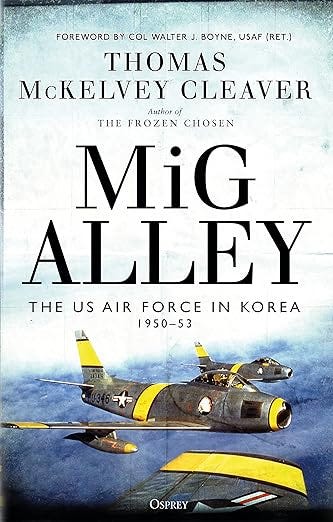MIG Alley and the Forgotten Air War Over Korea
What Cold War dogfights, Soviet tactics, and U.S. airpower reveal about strategy, adaptation, and future conflict
As we approach the 75th anniversary of the Korean War’s outbreak this June 25th, I’ve been revisiting its history, especially the first year of the war; the dramatic North Korean invasion, the desperate defense of the Pusan Perimeter, the audacious Inchon landing, and the ill-fated decision to push north past the 38th parallel, prompting China’s massive intervention.
Although I’ve long been familiar with the course of the ground war, I was surprised by how little I knew about the conflict in the air. If the Korean War is often called the “forgotten war,” the air campaign may be its most forgotten chapter. To fill that gap, I turned to MiG Alley: The U.S. Air Force in Korea 1950–1953 by Thomas Cleaver. An excellent read! Cleaver, a master storyteller, doesn’t just recount historical events—he tells the story of the air war through the eyes of the men who lived it, giving voice and depth to a dimension of the war too often overlooked.
Thomas Cleaver, a Navy aviation veteran and lifelong enthusiast of military flight, has spent nearly four decades immersed in the study and writing of aviation history from World War II through Vietnam. The author of at least 17 books and numerous articles, Cleaver blends technical expertise, a deep understanding of combat aviation, and a keen appreciation for the human element of warfare. His writing brings to life not only the historical record but the vivid, personal experiences of the pilots and aircrews who fought in the skies.
Keep reading with a 7-day free trial
Subscribe to The Military Reading Room - History, Strategy, and Insight to keep reading this post and get 7 days of free access to the full post archives.





